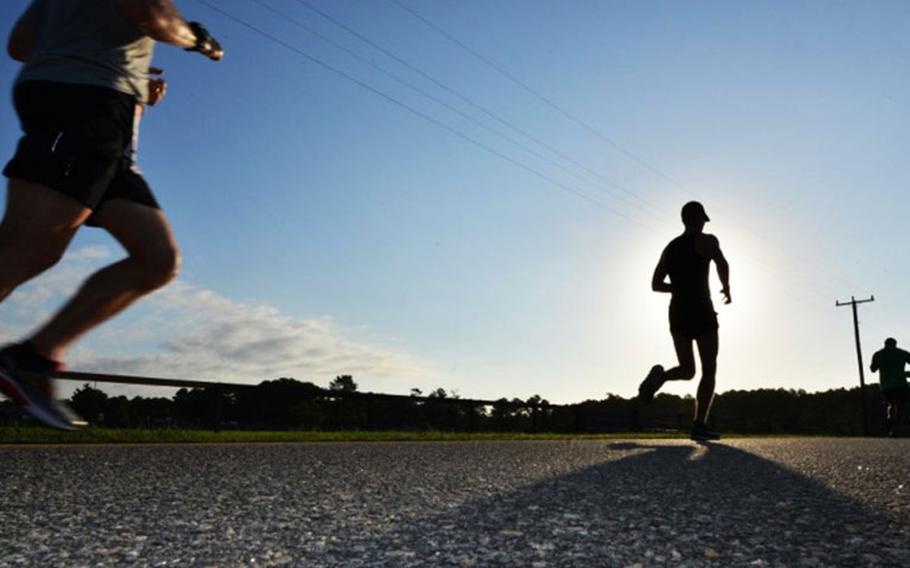Community News
Setting goals, logging miles: How to train for a running event
December 13, 2018

()
FALLS CHURCH, Va. — From a 5K to a full marathon, new and experienced runners alike have one thing on their minds: crossing the finish line. To get there without injury, it’s important to set goals, use the right shoes, and practice good health habits.
“Training for a running event takes the right mindset,” said Lindsay Buckalew, chief of health promotion for Air Force Space Command. “Intent, or just the right mentality, is a huge motivating factor.”
Setting realistic goals can help maintain focus and motivation throughout the training process. Runners may decide to jump right into a training regimen, but a sudden increase in pace, intensity, or distance can lead to injuries, said Buckalew. No one is immune to injuries, even the most experienced of runners. Seeing a doctor, or even a sports medicine specialist, before starting a training plan is also recommended, he added. This is especially important for those with a pre-existing condition or prior injury.
Army Maj. Tyson Baynes, a physician assistant and deputy for the Army Traumatic Brain Injury Program, said runners should make a training plan that gradually builds mileage by no more than 10 percent each week. While a 5K may not require weeks of preparation, a full marathon should involve at least 20 to 24 weeks of running and cross training, Baynes added. If people haven’t been active in a while, or at all, they should ease into training.
“Know your limitations,” said Baynes. “We get in this mindset that more is better, but sometimes more is not better because it can lead to overuse injuries that impede training efforts and reduce race day performance.”
A plan that allows the gradual building of endurance, such as running for one minute and walking for a minute, can help prevent injuries, said Baynes. Even with shorter distances, runners are encouraged not to do more than three alternate days of running per week, 30 minutes per session, and 10 miles per week total as part of overall recommendations for injury prevention, said Buckalew.
Contrary to popular belief, training for a running event takes more than running. Cross training through various avenues, such as yoga, cycling, or swimming, helps build strength. Building various muscle groups will help runners in the long haul, said Baynes, who recommends cross training once or twice a week. These activities helps prevent overuse injuries from working the same muscle groups day after day.
Running doesn’t require a lot of specialized equipment, but having the right shoes can make a difference when logging miles, said Buckalew. Shoes should be replaced every 250 to 500 miles, or at least twice a year depending on how often they’re used. Some runners prefer to get fitted at a running or sporting goods store where knowledgeable staff can provide advice on form and shoes, he added.
Experienced runner and Navy Cmdr. Leslie Kindling ran track in high school and college, and started participating in road races as a graduate student. With races ranging from 1 mile to 100 miles under her belt, she’s learned one crucial lesson: Listen to your body.
“This is the only body you get, so treat it well now so it’ll treat you well later,” said Kindling, an aerospace and operational physiologist for the Navy. Soreness lasting more than two days, or pain that can be pinpointed to a specific location, can be warning signs for overuse injuries. “If it hurts two days in a row, you need to stop and figure out why, and then fix it.”
Muscles need time to rebuild after use, just as the body needs good nutrition and adequate sleep to recover. Staying hydrated, getting adequate sleep, and eating a nutritious diet helps the body reach its full potential during training, said Buckalew.
“If people enjoy their running without injury and experience success early on in the training plan, they’ll be able to achieve more as they try to meet their goals,” said Buckalew, urging runners to relax and enjoy the challenge. “If you can decide you want to do this, there are resources out there to help you on your way to success.”